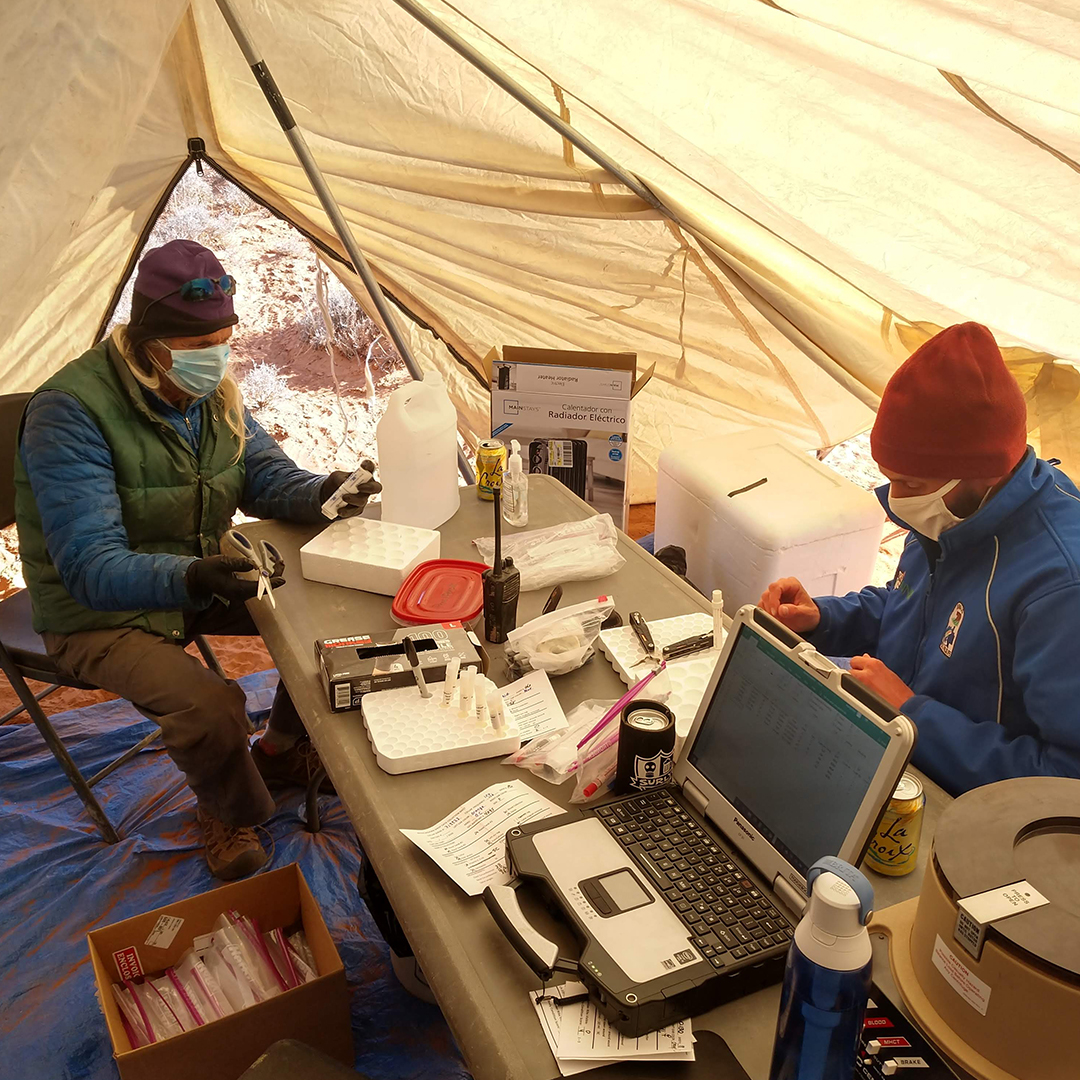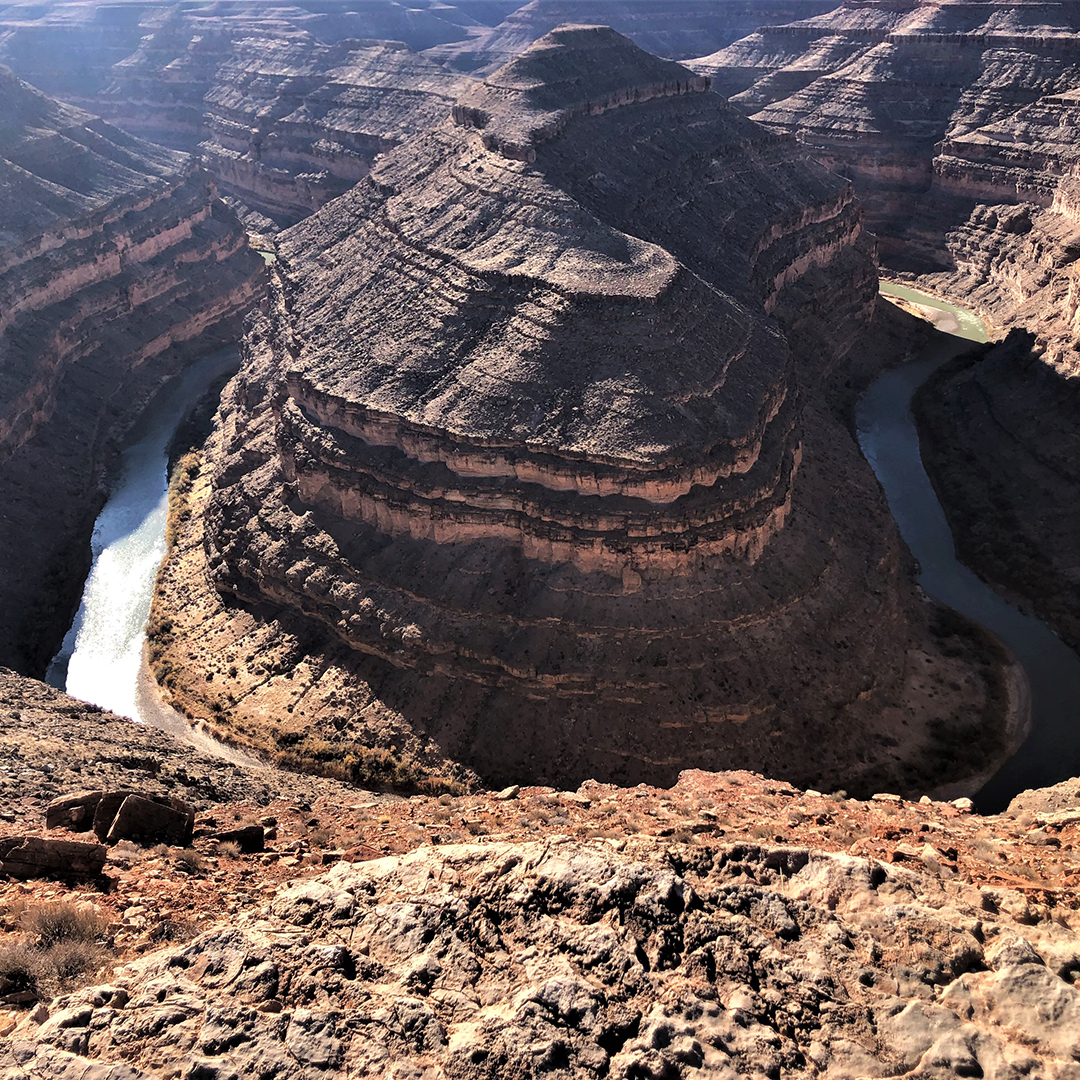January 13, 2021
Helping the Herd
How Denver Zoo is Conserving Bighorn Sheep on the Colorado Plateau
By Stefan Ekernas, Rocky Mountain/Great Plains Program Director
In December, Denver Zoo helped launch a new field project to conserve desert bighorn sheep on the Colorado Plateau. The project—supported by a $260,000 grant from the Bureau of Indian Affairs and U.S. Fish and Wildlife Service to the Navajo Nation—aims to stop a pneumonia epidemic sweeping through Navajo Nation’s bighorn sheep. The disease has triggered 70 percent declines in two of the Nation’s three bighorn populations. A collaborative team from Navajo Nation Department of Fish and Wildlife, Colorado State University, Wildlife Conservation Society, and Denver Zoo successfully prepared for and captured 90 bighorn sheep along the San Juan River.
Video Courtesy of Native Range Capture Services and Denver Zoo
Sheep were sampled for disease, fitted with GPS collars to track movements and survival, and released. The first phase of the project is aimed at understanding disease epidemiology and movements in bighorn. Our next step is to work alongside indigenous subsistence herders who tend domestic sheep that are likely reservoirs for pneumonia-causing pathogens. Led by a Navajo Nation graduate student, this second phase will investigate domestic sheep epidemiology and movements, with the goal of identifying conservation solutions that isolate bighorn from domestic sheep while supporting traditional livelihoods.

Photo courtesy of Jess Fort, Navajo Nation Department of Fish and Wildlife
Bighorn once roamed in vast numbers across the Rocky Mountains, Great Plains, and Colorado Plateau. Current populations are a mere 5 percent of historical numbers—a shadow of former abundance. Over-hunting and livestock competition have taken a heavy toll, but the introduction of novel diseases has proven an even more insidious threat.
Pneumonia outbreaks in bighorn result in mass mortalities that cause populations to plummet within a few years, followed by 10-20 years of high mortality in lambs that prevents populations from recovering. A complex combination of disease pathogens and hosts are involved, including the bacteria Mycoplasma ovipneumoniae, Mannheimia haemolytica, and Pasteurella multocida with bacterial infections possibly enabled by lungworms, all of which can be carried by multiple species of hoofed animals. Despite all the complexity, domestic sheep appear to be a key disease reservoir. And isolating bighorn from domestic sheep has proven successful in preventing outbreaks.
Interspersed among spectacular red rock canyons, sheep herders on Navajo Nation are the latest in a 500-year-long line of Diné people raising sheep on their ancestral lands for wool and meat. They make a living in an unforgiving landscape that receives only 2 inches of precipitation each year, using an their deep traditional ecological knowledge that all too often gets overlooked. For most of Diné history bighorn thrived alongside herders and their domestic sheep, but something changed in the 20th century. Driven to near-extirpation by the mid-1990s with only 34 animals remaining, the Navajo bighorn made a remarkable recovery to 600 animals in response to concerted conservation efforts—and by 2016 represented 1 in every 7 bighorn in Utah. Now, that recovery is threatened by disease.

Photo courtesy of Joel Berger, Colorado State University and Wildlife Conservation Society
Navajo Nation is enormous at 18 million acres. It carries a grim history of outsider interference, and is both under-resourced and lacks capacity to fully address this conservation challenge. Denver Zoo’s Conservation and Animal Health Departments are supporting Navajo Nation; filling gaps in capacity by providing ecological, epidemiological, community engagement, and veterinary expertise. The successful capture was an exciting first step in tackling the conservation challenges facing the Nation’s bighorn. Now comes the hard work of bringing communities into our work, and securing opportunities for the next generation of Native conservationists.
-
 December 14, 2023
December 14, 2023Ancient Lands,
New GroundHOW NAVAJO NATION GRAD STUDENT JAMIE BEGAY IS CHANGING THE FACE OF NATIVE CONSERVATION The new Indigenous Bighorn Fellowship,…

